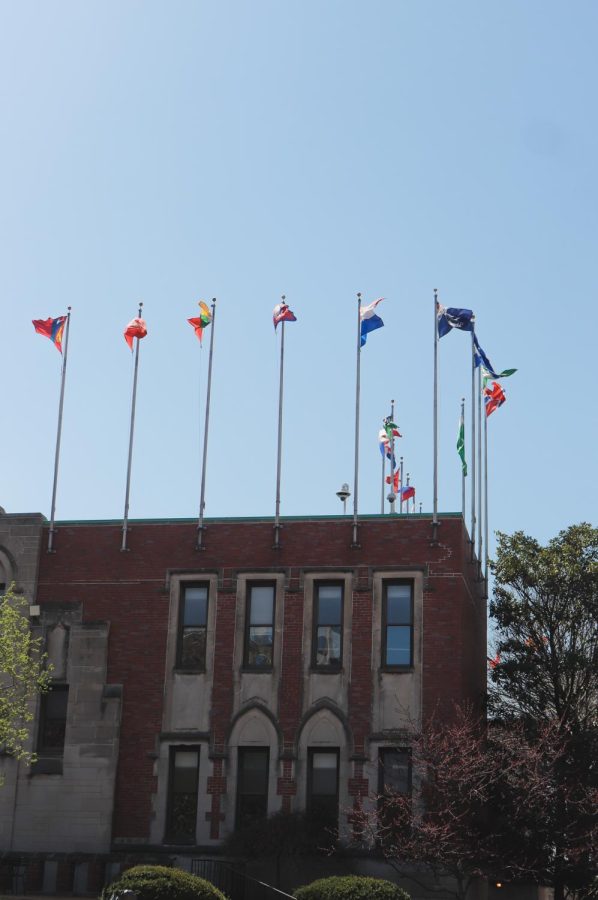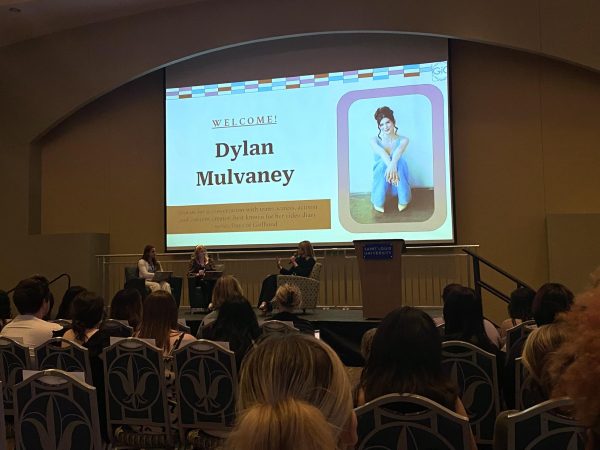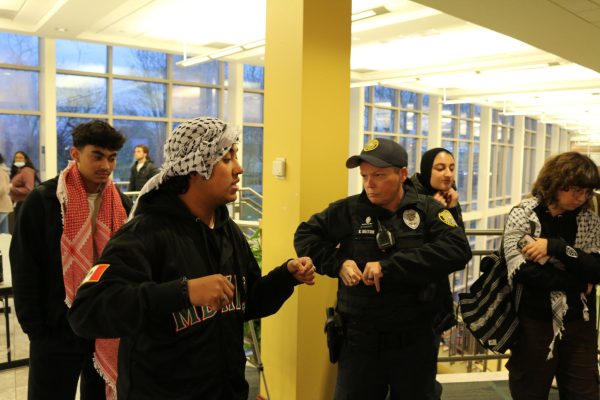International students’ experiences at SLU
The building that draws the most attention at Saint Louis University is the Center for Global Citizenship with flags representing dozens of different countries waving at all times. It is an indicator that international students from across the world call SLU their alma mater. And the numbers seem to be increasing.
Statista shows that amidst the pandemic year of 2020-21, the number of international students in the United States dropped to 914,095 compared to peak enrollment of 1,095,299 in 2019-20. However, 2021-22 saw an increase in enrollment numbers and amounted to 948,519 international students. Boundless reports that in 2021, international students gave $28.4 billion to the U.S. economy and supported more than 306,308 jobs.
However, international students offer more than just a boost to the economy. According to Boundless, “[International students] also enhance the intellectual and cultural environment for American students. The relationships and experiences shared by domestic and foreign students have long-lasting impacts on personal, socioeconomic, and even political growth.”
However, there is a flip side to this data that is left unsaid: what is the level of acceptance and support that international students receive?
“Even though there are almost one million students from over 200 countries who study in the U.S., there is no broader understanding of the value that they bring to American society and are presented with educational and immigration hurdles every step of the way,” Dr. Rajika Bhandari said in an interview with Study International.
When polling the experiences of international students, official universities’ reports often only ask questions like, “How did the US education system help in the advancement of your career?” The nitty-gritty personal testimonies of international students get overshadowed. The University News interviewed international students at SLU to get to know their experience with feeling seen and supported on a U.S. campus. With various concerns that range from academic to socio-cultural, students say more should be done.
Grace Makaza, a communication student completing her final year in the Master’s Program, said she has appreciated the availability of professors and the library resources at SLU. This is something she felt she didn’t get in Zimbabwe, her home country. However, she also sees a clear divide between international and domestic students in her classes.
“The domestic students sit on one side and the international students on the other,” Makaza said.
Besides social challenges, she said having to navigate health costs when she first came to the United States was a struggle. Getting health insurance and paying for it is expensive for U.S. citizens, but it can be even more difficult for international students who cannot work for more than 20 hours a week.
“My sister is a funded graduate international student. She had to rush to urgent care and had to pay $500 from her pocket which was not covered by the insurance she got from her department,” Makaza said.
Makaza has attended a few CPT (Curricular Practical Training) and OPT (Optional Practical Training) sessions in 2021 and recommends more specialized workshops to better cater the various needs of students.
“[The international services office] should offer customized workshops because holding one big OPT session for students from so many different countries and different majors does not feel specific enough and a lot of students may leave the session having learned nothing,” Grace said.
Koyena Biswas, another master’s student in the Communication Department, from Mumbai, India, added that getting acclimated to the colloquial lingo, street language, slang and different dialects was an initial hurdle for her. However, she appreciates the international exposure through programs like the International Office’s CPT and OPT workshops and occasional cultural events hosted by SLU.
“The cultural events thrown by the International Office are definitely heart-warming like the Holi event because you get to have your food and listen to your language’s music,” said Biswas.
For non-STEM international students, there seem to be fewer support systems. Meha Gupta, who is completing her final year in the English Department’s master’s program, from Jammu, India, said that the present-day international student influx is very STEM-focused, so many career-oriented and recreational events cater to that field. Furthermore, she said that initial orientation days and events which are meant to introduce and welcome students to the campus, are catered more toward undergraduate students. She said as a new student, she would have appreciated it if there were events that included graduate students as well.
Filing taxes, especially for the first time, can be an additional source of anxiety for international students. With no guardian or tax officer to support them, international students are left to do their own research and learn through trial and error.
Mawufemor Amuzu, a first-year graduate student from Ghana studying communication, said that she recently had a couple of questions regarding her taxes but said the international office was not willing to give her any concrete answers.
“[The international office] instructed us to get tax officers but there is an amount to be paid. There were simple questions that could have been answered better by the international services. For example, I asked whether international students can owe taxes because I owe taxes and I don’t know how I owe money because I came in the fall of 2022. I contacted Sprintax but they evaded the questions as well. We need help with [these issues],” Amuzu said.
With the rising number of international students post-pandemic, this subset of the student population can positively transform campuses across the nation. In the meantime, many international students say there must be concrete and specialized support to ensure their success abroad.
Your donation will support the student journalists of Saint Louis University. Your contribution will help us cover our annual website hosting costs.









